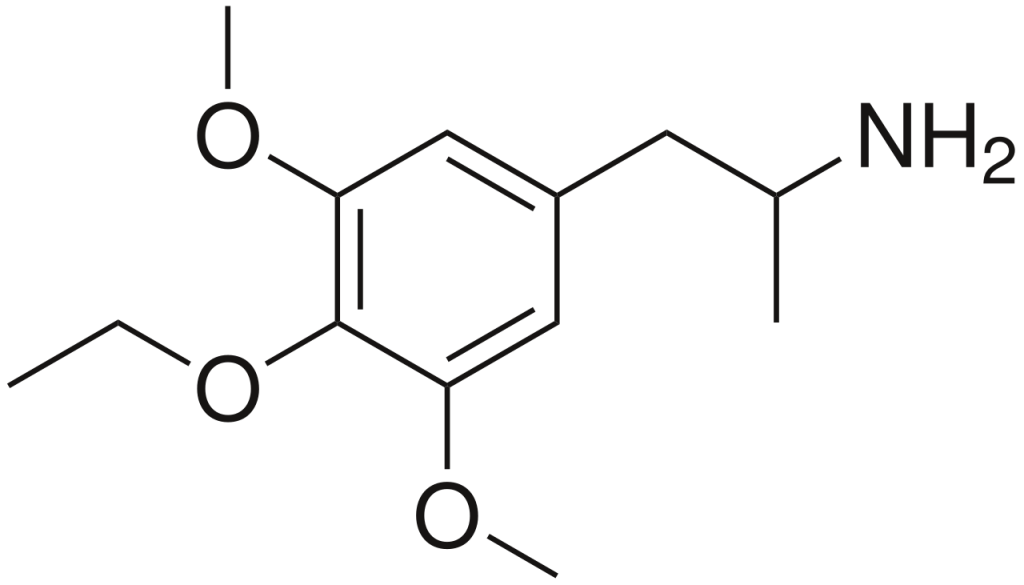Summary
3C-E, scientifically known as 3,5-Dimethoxy-4-ethoxyamphetamine, belongs to the amphetamine class and is renowned for its psychedelic properties. Alexander Shulgin, a prominent figure in the field of psychopharmacology, initially synthesized it.
In Shulgin’s book PiHKAL (Phenethylamines I Have Known and Loved), the recommended dosage for 3C-E, when taken orally, is noted to be within the range of 30 to 60 mg. The duration of its effects is described as lasting approximately 8 to 12 hours.
Notably, this compound serves as the amphetamine analog of mescaline, sharing similarities in structure and potentially leading to analogous psychoactive experiences.
| Identifiers | |
|---|---|
| IUPAC name | |
| CAS Number | 146849-92-5 |
|---|---|
| PubChem CID | 44350137 |
| ChemSpider | 21106237 |
| UNII | W9QX56V5RU |
| ChEMBL | ChEMBL128038 |
| CompTox Dashboard (EPA) | DTXSID40658382 |
| Chemical and physical data | |
| Formula | C13H21NO3 |
| Molar mass | 239.315 g·mol−1 |

FAQ
1. What is 3C-E?
- 3C-E is a psychedelic compound belonging to the amphetamine class, known for its psychoactive effects.
2. Who first synthesized 3C-E?
- 3C-E was initially synthesized by Alexander Shulgin, a renowned chemist and psychopharmacologist.
3. How is 3C-E typically consumed?
- It is usually taken orally, and the recommended dosage, as mentioned in Shulgin’s book PiHKAL, falls within the range of 30 to 60 mg.
4. What are the effects and duration of 3C-E?
- 3C-E is known for its psychedelic effects, which may include altered perception, changes in consciousness, and hallucinatory experiences. The duration of its effects typically ranges from 8 to 12 hours.
5. Is 3C-E legal?
- The legal status of 3C-E varies by country and jurisdiction. It may be controlled in some regions, while in others, it might be unregulated or fall into a legal gray area. It’s essential to understand the specific regulations in your area.
6. Are there any potential risks associated with 3C-E use?
- Using 3C-E, like other psychedelics, carries potential risks, including psychological distress, anxiety, and other adverse effects. It is crucial to consider set and setting when using this substance.
7. Can 3C-E be used for therapeutic purposes?
- There is limited research on the therapeutic potential of 3C-E, and it is not approved for medical or therapeutic use. Other psychedelics, like psilocybin and MDMA, have been more extensively studied for therapeutic applications.
8. Is 3C-E addictive?
- The addictive potential of 3C-E is not well understood, but it is generally considered to have a lower risk of physical dependence compared to substances like opioids or stimulants. Psychological dependence can still occur.
9. Where can I find more information about 3C-E?
- Given the evolving legal and scientific landscape surrounding 3C-E, it’s important to consult reliable sources of scientific literature and seek advice from healthcare professionals. Staying informed and making well-informed decisions is crucial when considering the use of this substance.